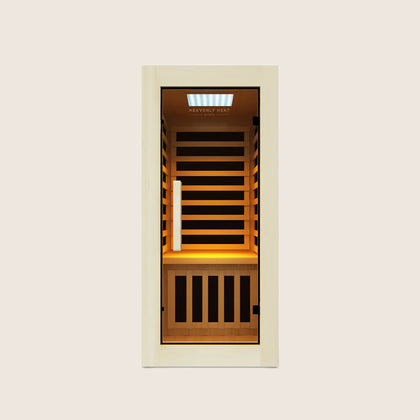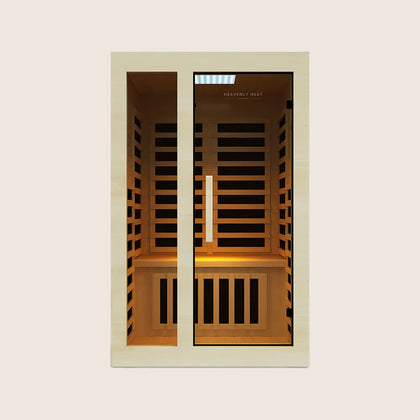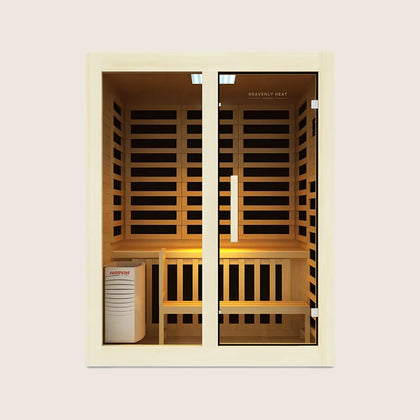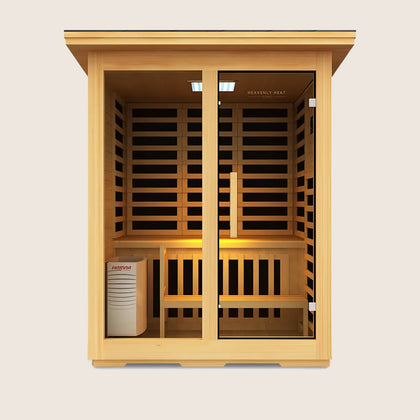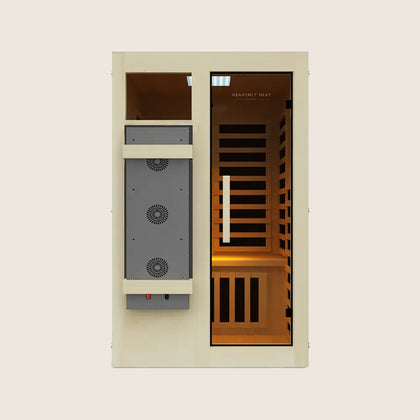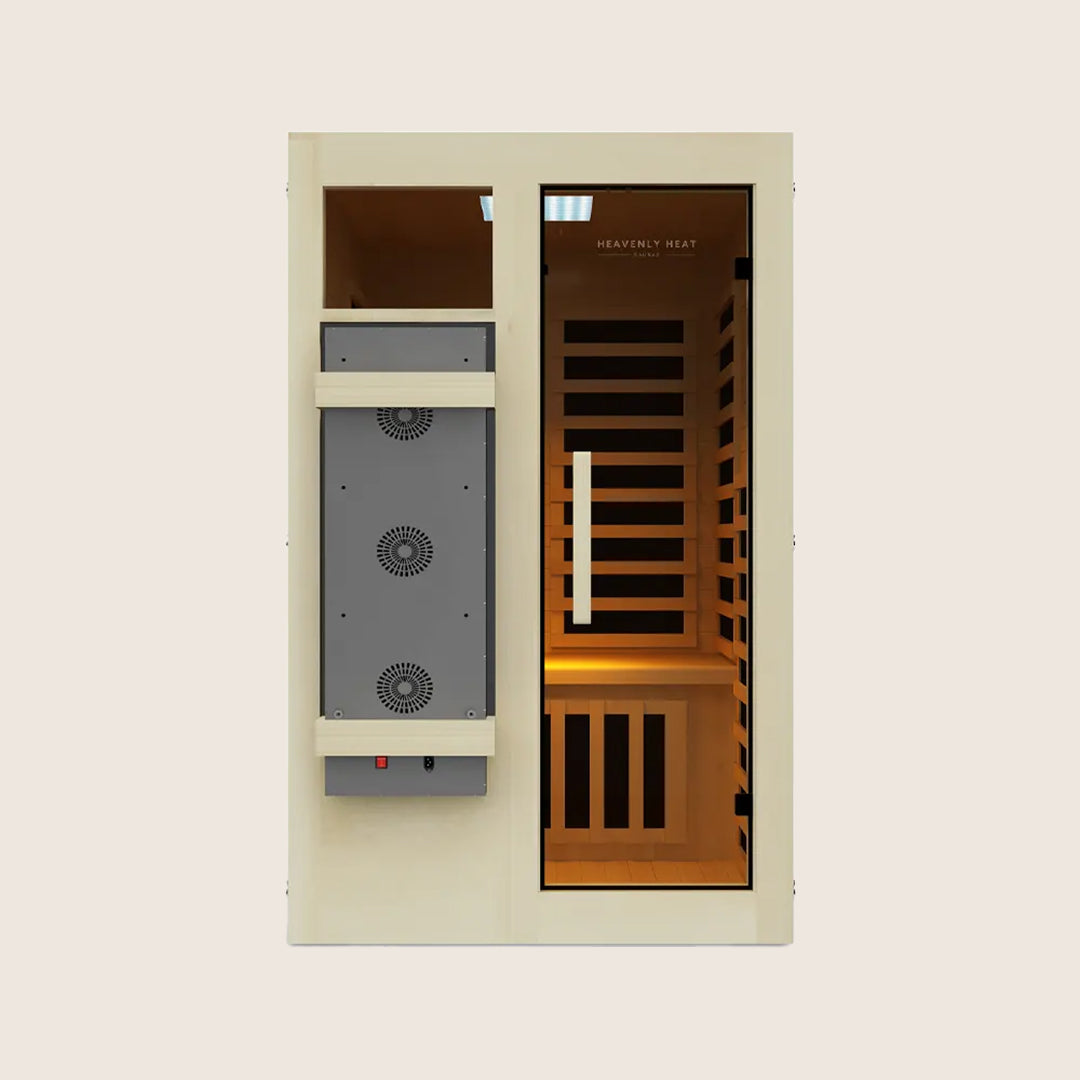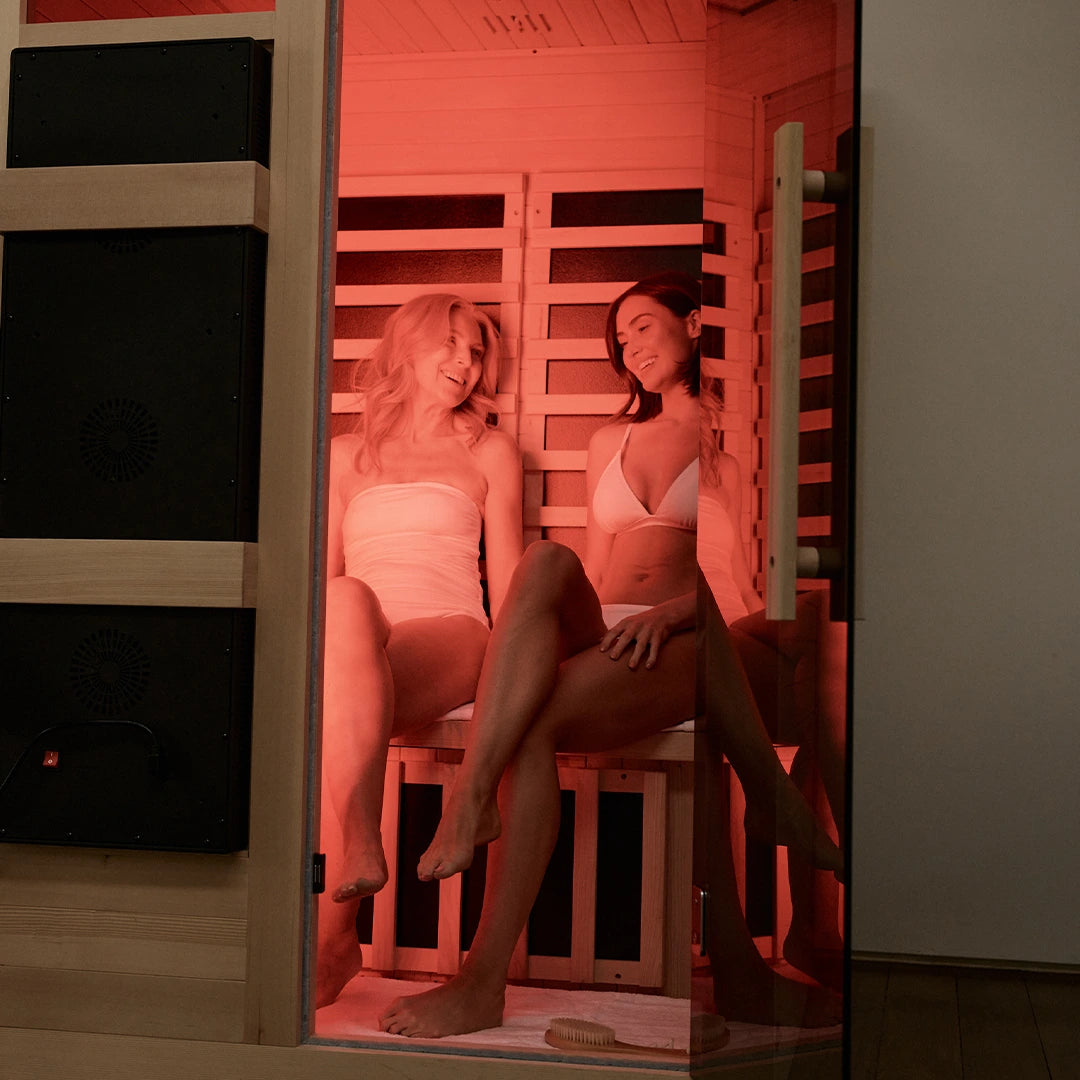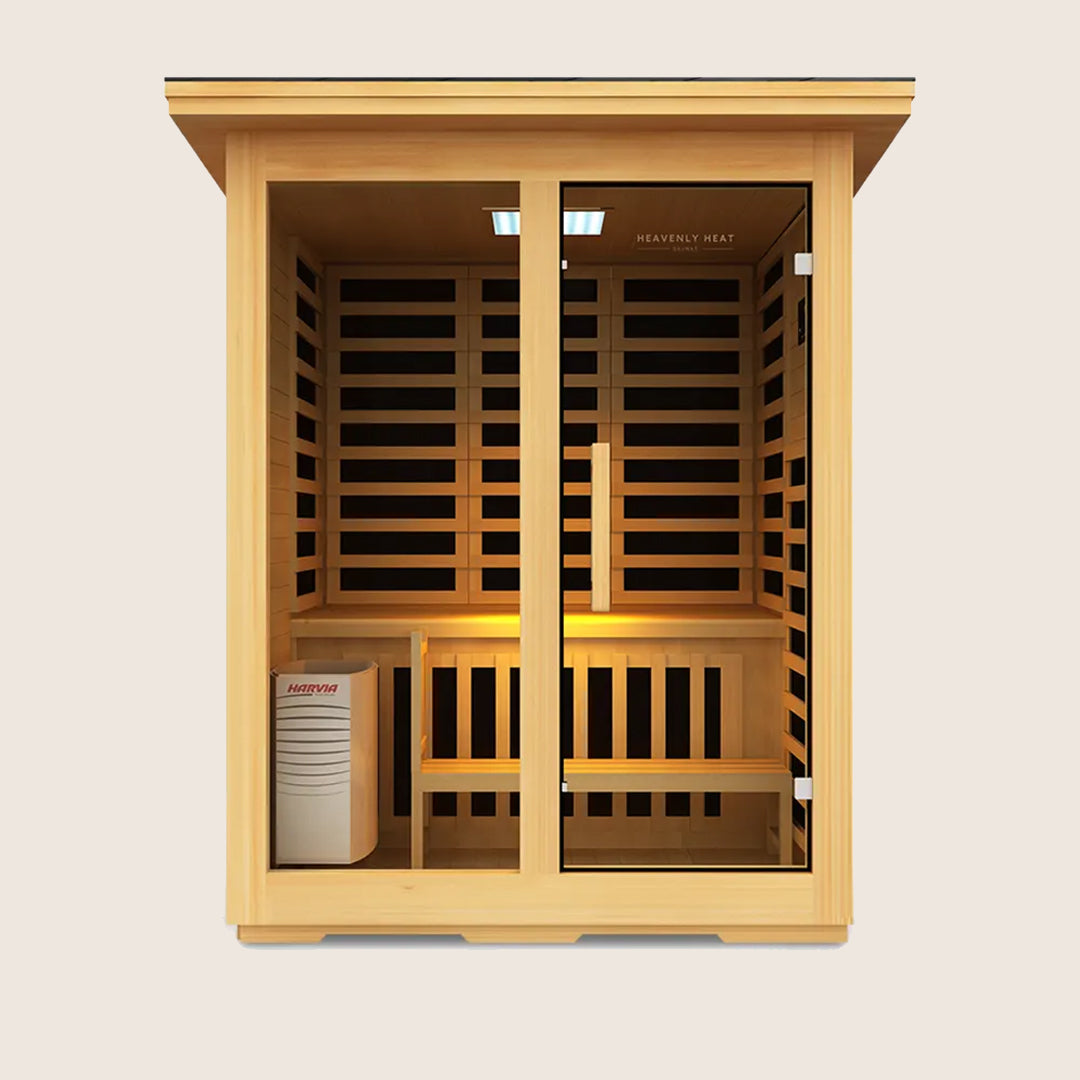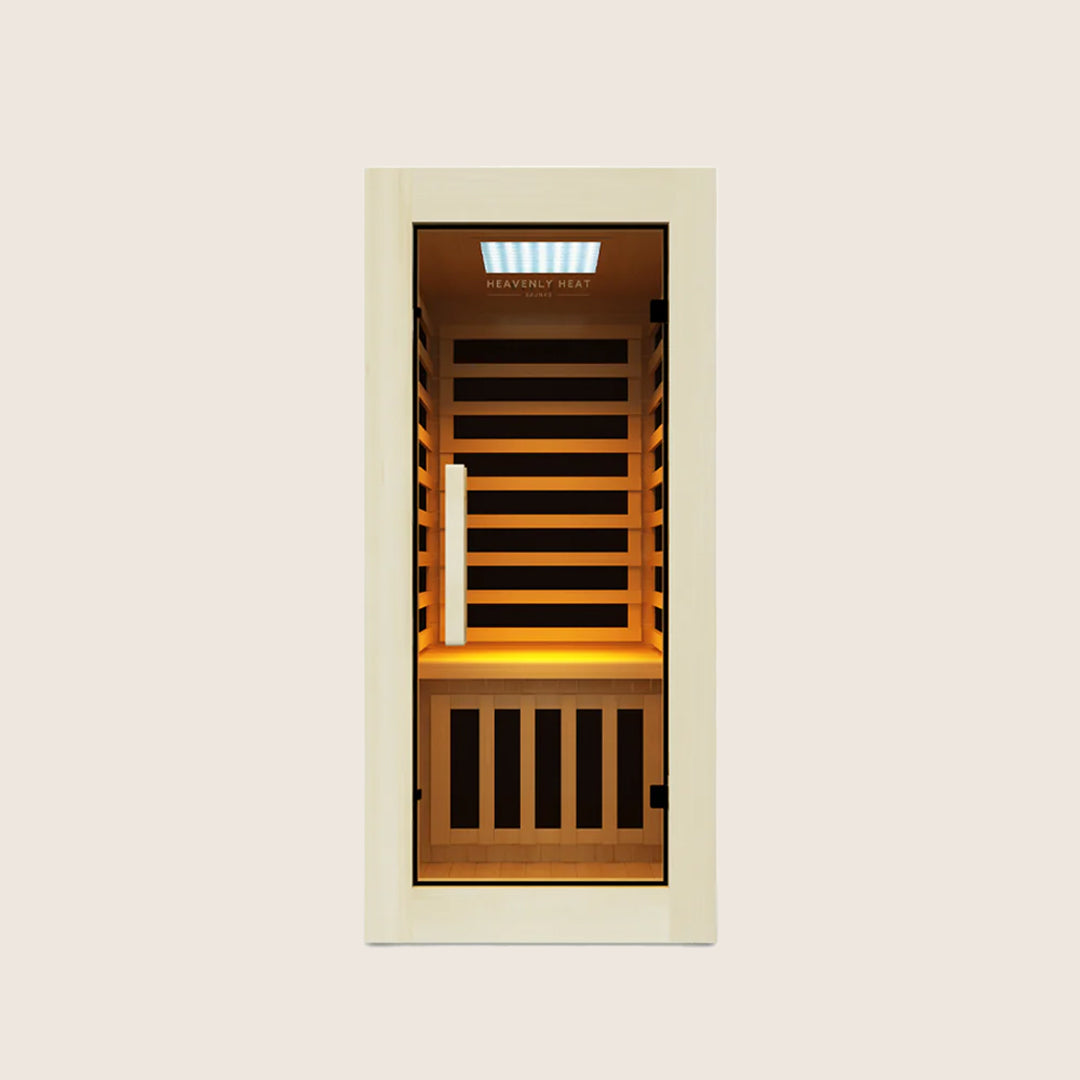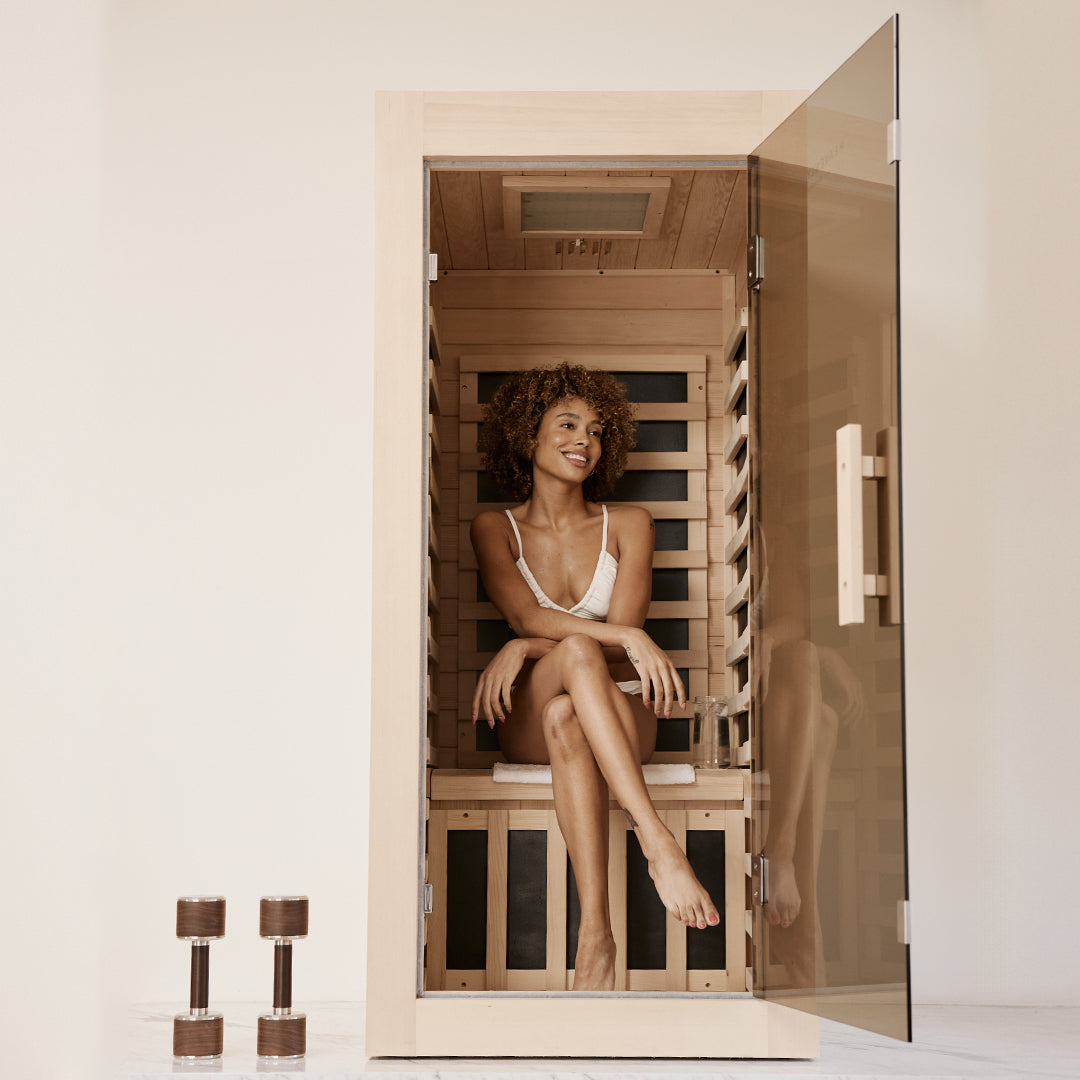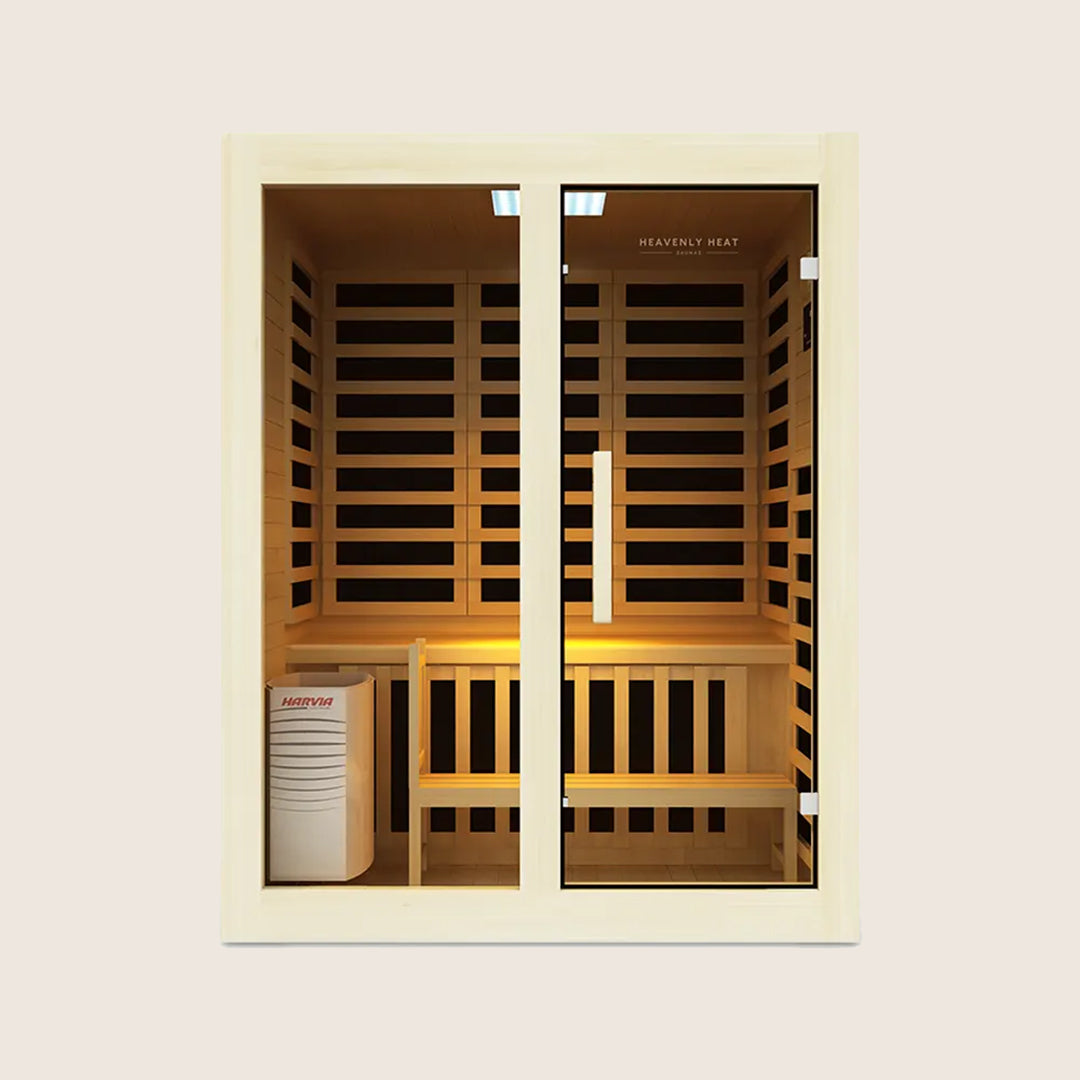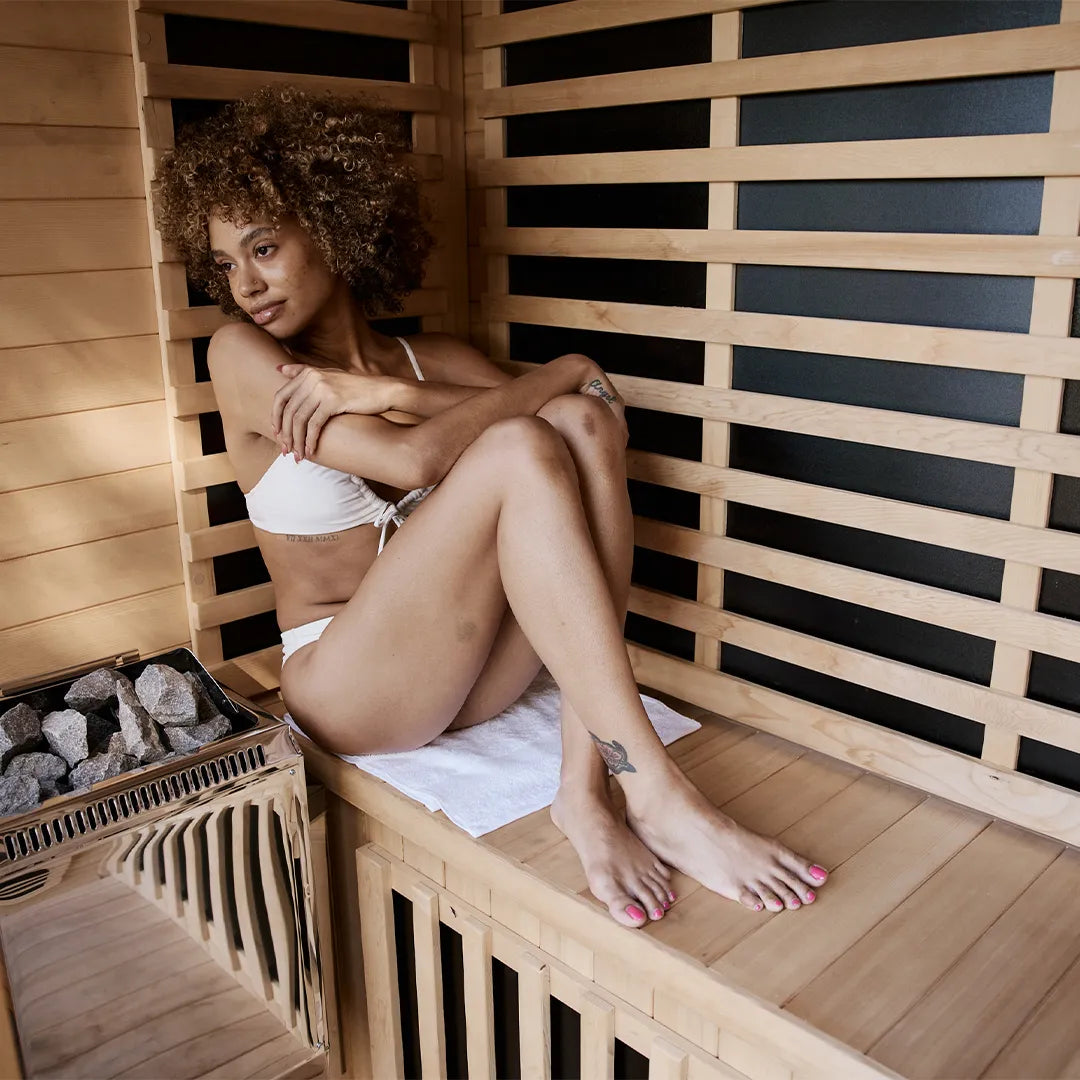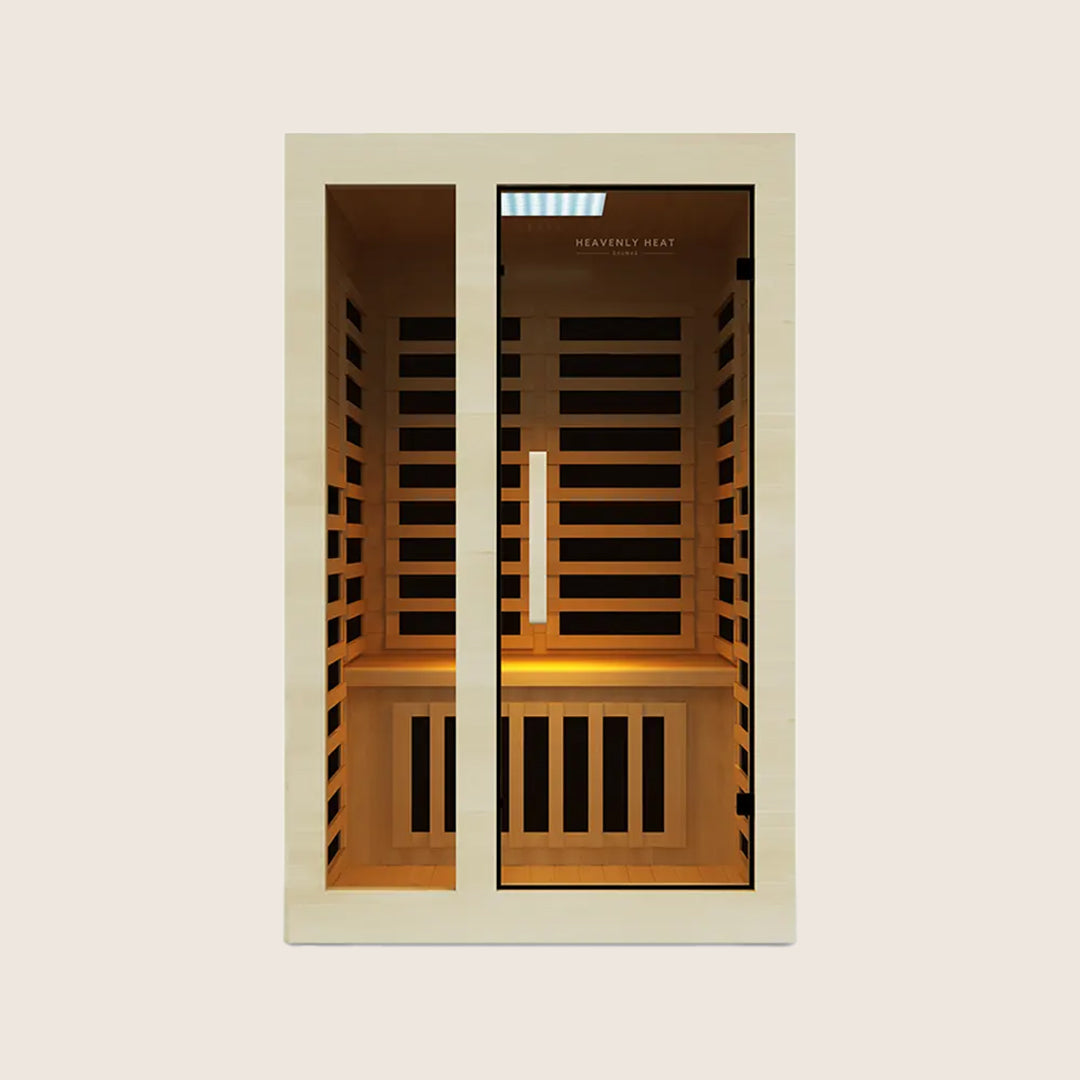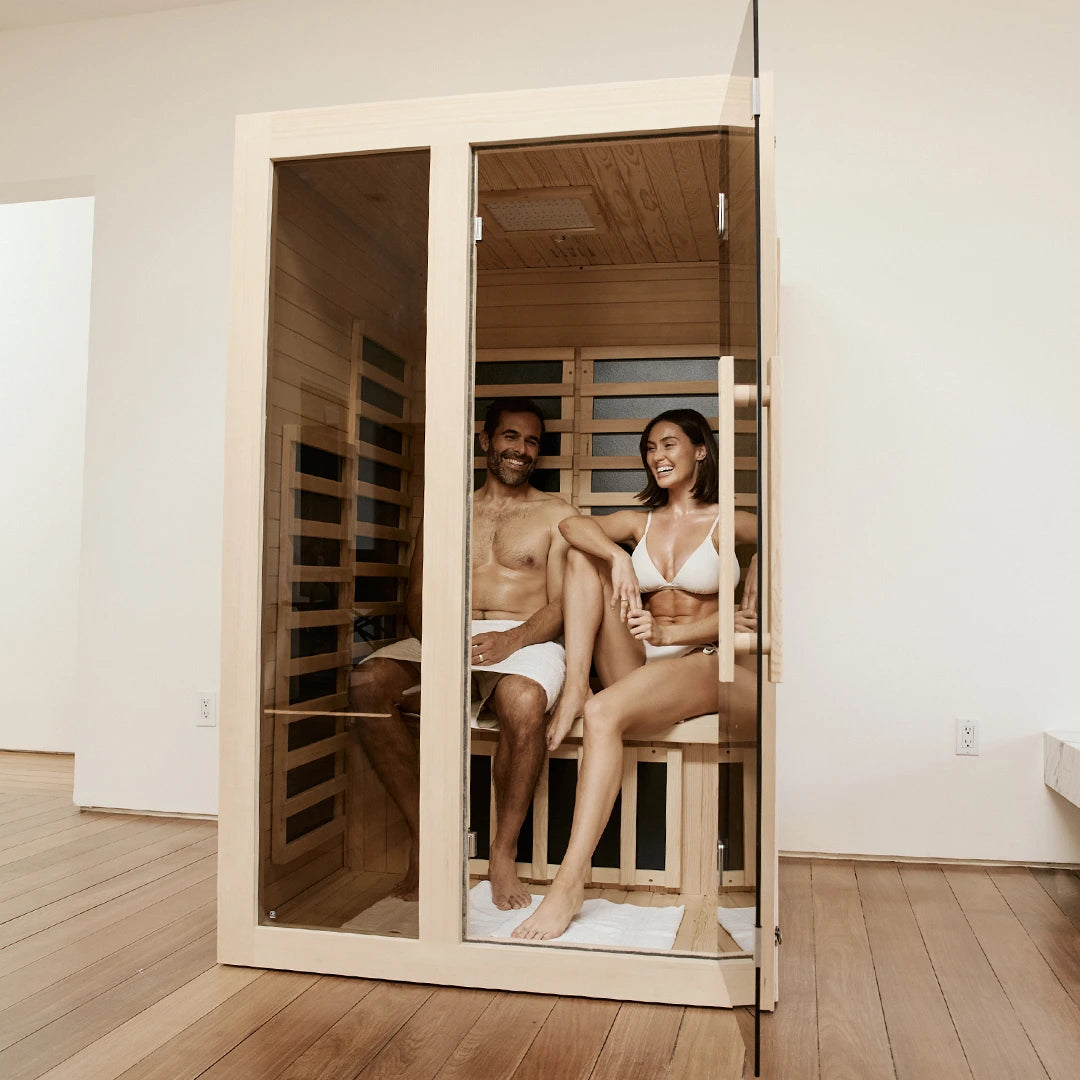Best infrared saunas with red light therapy
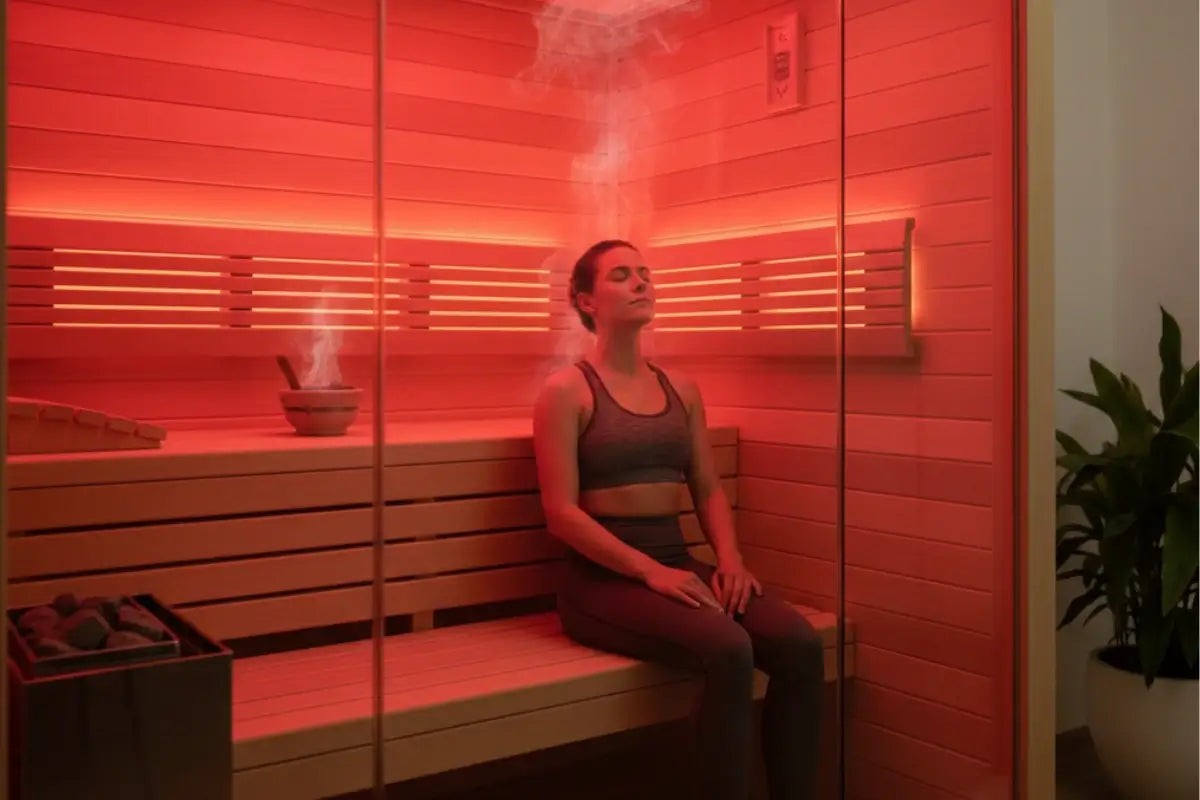
Looking for a natural way to boost your health, relax, and improve your skin? Infrared saunas combined with red light therapy offer powerful benefits, from better circulation and faster muscle recovery to glowing, youthful skin.
In this guide, we’ll explore how these therapies work, why they matter, and how to choose the best one for you.
Table of contents
Key Takeaways
Combine Therapies for Maximum Benefit: Red light and infrared heat work together to enhance recovery, circulation, and skin health.
Support Your Skin and Collagen: Red light therapy stimulates cell regeneration while infrared heat boosts nutrient delivery for glowing skin.
Boost Circulation and Recovery: Infrared saunas improve blood flow, reduce muscle soreness, and speed healing.
Reduce Stress and Enhance Mood: Regular sessions lower cortisol, support relaxation, and improve sleep quality.
Choose Quality and Safety: Look for full-spectrum saunas, effective red light panels, non-toxic materials, and precise controls.
Best Infrared Saunas with Red Light Therapy
Red light therapy, backed by research from UCLA Health, can support skin health, reduce inflammation, and promote overall wellness.
Combining this with infrared heat amplifies detoxification, relaxation, and recovery, creating a holistic wellness experience.
Heavenly Heat Saunas integrate full-spectrum red and near-infrared panels in their premium units, delivering consistent warmth while keeping EMF levels ultra-low.
The solid Canadian Hemlock construction ensures a clean, chemical-free environment, while thoughtful features like rapid heat-up and easy plug-in setup make daily use effortless.
It’s like bringing a professional spa into your home, making consistent wellness both luxurious and accessible.

Understanding Red Light Therapy and How It Works
Red light therapy (RLT) has gained attention for its ability to support skin health, wound healing, and pain relief.
Research published in Anais Brasileiros de Dermatologia highlights that LED therapy can enhance skin cell viability and accelerate wound recovery in experimental models by modulating inflammation and boosting antioxidant activity.
At the cellular level, studies show that red and near-infrared light stimulate mitochondrial activity, increasing ATP production, the energy molecule that powers muscles and tissue repair.
Clinically, randomized trials demonstrate that RLT can reduce pain, inflammation, and tissue damage, aiding recovery in conditions ranging from neck and back pain to complications from cancer treatments like radiation or chemotherapy.
The effectiveness of RLT is closely tied to wavelength: 630–660 nm light works primarily on the skin’s surface for anti-aging and acne, while 810–850 nm penetrates deeper tissues for muscle and joint recovery.
Combining multiple wavelengths can provide a more comprehensive therapeutic effect, making RLT a versatile tool for both cosmetic and medical applications.
Understanding Infrared Sauna Therapy and How It Works
Infrared sauna therapy has gained popularity for its potential health benefits, though the scientific evidence is still developing.
A review published in Canadian Family Physicians found moderate evidence supporting its role in improving blood pressure and aiding those with congestive heart failure, while evidence for chronic pain, fatigue, or obesity remains limited.
Unlike traditional saunas that heat the air, WebMD explains, infrared saunas use light to warm the body directly, which may feel more comfortable and mimic some effects of exercise, potentially helping with conditions like arthritis, high blood pressure, and heart health.
Research in the European Journal of Investigation in Health, Psychology and Education highlights infrared therapy’s promise in reducing musculoskeletal pain, especially for fibromyalgia and osteoarthritis, though its impact on muscle recovery after athletic injuries appears minimal.
Overall, while infrared saunas may support circulation, cardiovascular function, and pain management, claims such as cholesterol reduction or detoxification lack strong evidence.
Red Light Therapy vs Infrared Sauna: What’s the Difference?
Red light therapy and infrared saunas both use light for health benefits, but they work very differently.
Red light therapy uses wavelengths between 600–850 nm, primarily 630–700 nm, which target the skin’s surface to boost collagen, improve skin tone, and promote anti-aging.
In contrast, infrared saunas use longer, invisible wavelengths, typically above 750 nm, that penetrate much deeper, reaching muscles, nerves, and even bones, making them effective for muscle recovery, joint pain relief, and detoxification.
Because of these differences, safety and exposure times also vary. Red light therapy is generally low-risk, requiring only protective eyewear during sessions, while infrared heat is more intense and may require shorter, controlled sessions to prevent overheating.
Both therapies have growing clinical support for their respective benefits, but they are best suited for different goals:
red light for skin and surface-level rejuvenation, and infrared for deeper tissue healing and overall wellness. Understanding these differences helps users choose the right therapy for their needs.
Can Red Light and Infrared Therapy Be Combined?
Yes, red light and near-infrared (NIR) therapy can be combined to target both superficial and deep tissues.
Red light supports skin rejuvenation and wound healing, while NIR penetrates deeper to relieve pain, inflammation, and support recovery, offering enhanced cellular energy, circulation, and accelerated healing.
Benefits of Using Infrared Saunas with Red Light Therapy
Enhanced Detoxification and Cellular Health
Infrared saunas and red light therapy support detoxification and cellular health. Infrared heat promotes sweating to remove toxins, while red light therapy stimulates mitochondria, increasing cellular energy.
This combination can improve gut health, reduce oxidative stress, and enhance cellular repair, potentially slowing aging. It also strengthens the immune system at the cellular level.
Boosted Circulation and Cardiovascular Support
Infrared saunas improve blood circulation by warming muscles and blood vessels, allowing oxygen and nutrients to travel more efficiently.
Red light therapy supports heart health and vascular function. Together, they enhance circulation, reduce blood pressure, and ensure organs like the heart, brain, and muscles receive essential nutrients.
Accelerated Muscle Recovery and Pain Relief
Infrared saunas combined with red light therapy offer a powerful approach to speed up muscle recovery and reduce pain.
Research published in SpringerPlus shows that far-infrared sauna sessions penetrate deeply into muscles and neuromuscular tissue, supporting faster recovery after endurance workouts while providing a gentle, relaxing experience.
Complementing this, studies in the International Journal of Molecular Sciences highlight that red light therapy boosts blood flow, regulates inflammation, and enhances cellular repair, helping tissues recover more efficiently.
Athletes report tangible benefits from combining both therapies, including reduced soreness, improved neuromuscular performance, and faster post-workout recovery.
Mechanistically, Photochemistry and Photobiology demonstrates that red and near-infrared light stimulate mitochondria to produce more ATP, fueling muscle repair and energy for subsequent training.
Together, the heat from the sauna promotes circulation and relaxation, while the light therapy accelerates cellular repair, creating a synergistic effect that shortens recovery time, reduces inflammation, and leaves athletes feeling rejuvenated and ready for their next session.
Improved Skin Health and Collagen Production
Infrared saunas combined with red light therapy (RLT) offer remarkable benefits for skin health, particularly in boosting collagen and elastin production.
Research shows that both therapies stimulate fibroblasts, the cells responsible for creating collagen, leading to firmer, more elastic skin and a reduction in fine lines and wrinkles.
Studies cited by Anais Brasileiros de Dermatologia highlight how low-power light therapy accelerates wound healing by promoting fibroblast proliferation, angiogenesis, and collagen synthesis.
Meanwhile, the Journal of Photochemistry and Photobiology notes that infrared wavelengths enhance blood circulation and nutrient delivery to skin tissues, further supporting skin regeneration.
Clinical trials have documented measurable improvements in skin texture, tone, and elasticity, making these therapies an appealing non-invasive approach for anti-aging.
Although longer-term studies are needed for conclusive evidence, current findings indicate that regular sessions of infrared saunas and RLT can visibly rejuvenate the skin, improve complexion, and support overall skin health, combining science-backed results with a relaxing wellness experience.
Stress Reduction and Mood Enhancement
Infrared saunas combined with red light therapy offer powerful benefits for stress relief and mood enhancement.
Scientific studies reveal that infrared sauna sessions can lower cortisol, the body’s primary stress hormone, shifting you from a stressed “fight or flight” state to a calmer, relaxed state.
By activating the parasympathetic nervous system, these sessions encourage “rest and digest” functions, reduce tension, and improve sleep quality, one study even reported up to a 70% improvement in deep sleep after just one session.
Red light therapy complements this by balancing key neurotransmitters like serotonin, dopamine, and GABA, while also supporting neurogenesis in the hippocampus, helping regulate mood naturally.
Heat therapy can also stimulate endorphin release, enhancing feelings of well-being. Furthermore, researchers highlighted by Medical News Today suggest that sauna use may benefit mental health by moderating body temperature, which could help reduce symptoms of anxiety and depression.
Measurable changes in heart rate variability and blood pressure after sessions further confirm the calming, stress-reducing effects.

Metabolic Support and Weight Management
Combining infrared sauna sessions with red light therapy can support fat loss and boost metabolism.
Infrared heat stimulates fat metabolism, while red light therapy improves cellular energy efficiency, enhancing calorie burn.
Post-workout sessions can accelerate fat metabolism and aid recovery. Regular use may increase overall metabolic rate, helping the body burn calories more consistently.
Immune System Strengthening and Inflammation Reduction
Infrared saunas strengthen the immune system by improving blood flow and supporting white blood cell activity.
Red light therapy enhances this by boosting white blood cell production and reducing joint inflammation.
Using both together can accelerate recovery from inflammation, helping the body fight infections more effectively.
Infrared addresses systemic Clean, while red light targets specific areas, promoting overall immune health and faster recovery.
Features to Look for in a High-Quality Infrared Sauna with Red Light
Choose Full-Spectrum Infrared for Maximum Health Benefits
Full-spectrum infrared saunas combine near, mid, and far-infrared wavelengths with red light. Near-infrared boosts cellular health, mid-infrared aids detox and reduces inflammation, and far-infrared improves circulation and relaxation.
Red light enhances skin tone and stimulates collagen. Full-spectrum saunas support energy, immunity, and skin health, offering a holistic approach to wellness.
Look for Red Light Panels That Provide Consistent, Effective Therapy
Effective red light panels deliver the right wavelengths (typically 630–680 nm) and maintain steady, even output.
High-quality diodes ensure reliability, and consistent, evenly distributed light maximizes skin health, anti-aging, cellular repair, and overall recovery. Checking manufacturer specifications or reviews helps ensure quality.
Select Saunas Made from Durable, Non-Toxic Materials
When selecting a high-quality infrared sauna with red light, it’s crucial to choose one made from durable, non-toxic materials.
Many low-quality saunas use plywood, particle board, or chemical lacquers, which can off-gas harmful toxins like formaldehyde, negatively impacting indoor air quality and potentially causing respiratory issues (Indoor Air).
Studies show that untreated woods like hemlock and cedar are far safer, offering hypoallergenic, low-VOC, and antimicrobial properties.
Hemlock provides a clean, odorless experience ideal for sensitive users, while Western Red Cedar adds natural aroma, moisture resistance, and durability.
Certifications such as FSC and GREENGUARD ensure that the wood is sustainably sourced and safe for long-term use, while third-party testing and standards like CARB and EPA confirm low VOC emissions and overall safety.
Choosing a sauna built from solid, untreated wood, rather than composites, protects both your health and the indoor environment, allowing you to enjoy the sauna experience without worrying about harmful chemicals or poor air quality.
Ensure Temperature Controls Are Precise and Safety Features Are Reliable
Good infrared saunas provide precise temperature control with consistent heat. Safety features, automatic shutoff, temperature sensors, and insulated components, protect users. Accurate controls allow customized warmth, ensuring a safe and comfortable sauna experience.
Pick a Size and Design That Offers Comfort and Easy Access
Choose a sauna that fits your space and needs. Single-person saunas are compact, while two-person or corner designs maximize efficiency.
Ensure doors are wide for easy access, benches are adjustable, and some models accommodate wheelchairs. Prioritize size, accessibility, and layout for comfortable, convenient use.
Opt for Extra Features Like Speakers or Chromotherapy for Added Wellness
Built-in speakers let you play music or meditation sessions to enhance relaxation. Chromotherapy lights use color to improve mood and reduce stress.
Together, they create a spa-like atmosphere, enhancing the mental wellness benefits of a sauna for personal or commercial use.
Choose Energy-Efficient Saunas That Are Easy to Maintain
Energy-efficient saunas reduce electricity use and running costs while maintaining performance. Cedar or hypoallergenic wood makes cleaning easier.
Low-maintenance designs combine durability and convenience, and energy-efficient features reduce wear, extending the sauna’s lifespan. Choosing the right materials and design ensures a cost-effective, eco-friendly sauna.
FAQs
Is it safe to use an infrared sauna with red light therapy daily?
Combining infrared sauna and red light therapy daily is generally safe for healthy individuals, but precautions matter. Stay hydrated, start with short sessions, and follow device guidelines. Avoid use if pregnant, photosensitive, or with certain medical conditions. Consulting a healthcare provider ensures safe, personalized use.
How long should a combined infrared + red light session last?
A combined infrared and red light session should last 10–20 minutes, starting with 5–10 to let your body adapt. Skin rejuvenation needs about 10 minutes, muscle pain 12–15, and acne 5–12. Avoid overuse, follow device instructions, and adjust duration to your response.
Are there any risks or side effects of using red light + infrared saunas?
Yes, red light and infrared saunas can pose risks, including dehydration, overheating, dizziness, blood pressure changes, dry skin, eye strain, and skin irritation. People with heart disease, high blood pressure, or kidney issues should consult a doctor. Hydration, eye protection, and moderation are essential.
Who should avoid infrared saunas or red light therapy?
While infrared saunas and red light therapy (RLT) offer potential benefits, certain groups should exercise caution. People with cardiovascular conditions, like heart disease or high blood pressure, may safely use saunas if their condition is stable, but sudden temperature changes, dehydration, and alcohol can pose risks, so short sessions, hydration, and gradual cooling are essential. Pregnant women are generally advised to avoid saunas, especially in the first trimester, to prevent dangerous overheating, and while formal guidelines for RLT are lacking, avoiding the abdomen and consulting a doctor is wise. Individuals with implanted medical devices or photosensitive conditions should also be careful; the International Journal of Molecular Sciences notes that infrared and far-infrared therapies can affect circulation and metabolic processes, potentially interacting with devices, while dermatology research warns that RLT can trigger adverse reactions in sensitive skin or those on photosensitizing medications. Older adults or people with kidney issues face higher dehydration and heat stress risks, as highlighted by Temperature: Multidisciplinary Biomedical Journal. Consulting a healthcare professional before use is always recommended.


